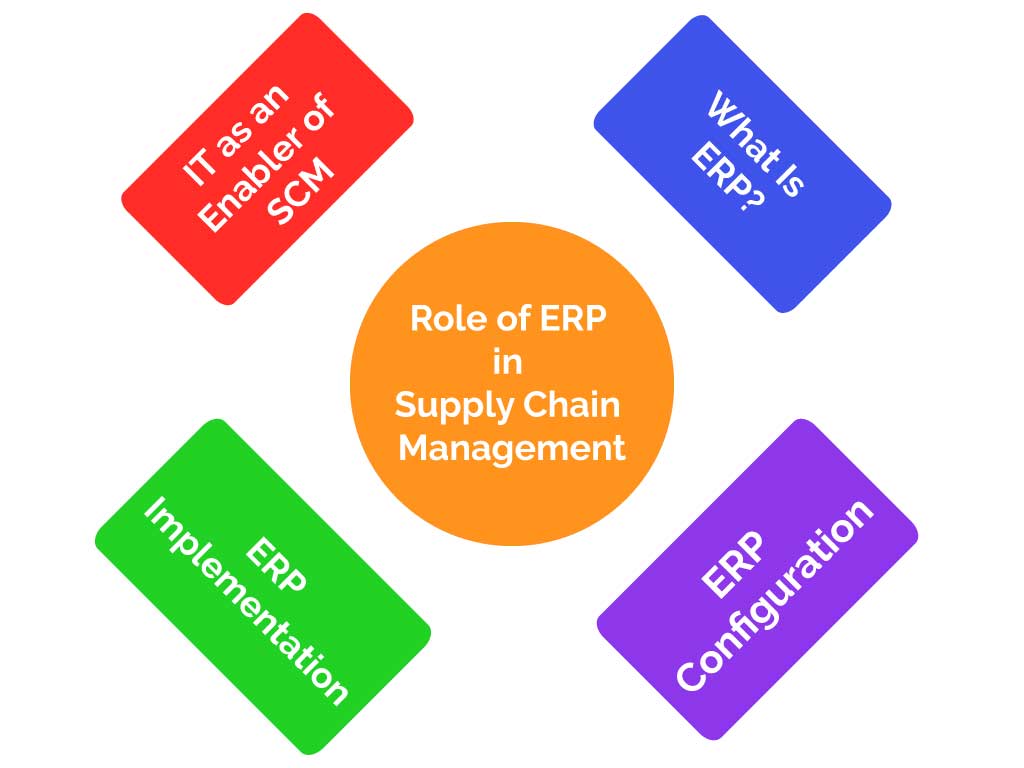IT as an Enabler of SCM
For a supply chain to function as a system all chain members must have access to the same information. Information technology (IT) enables communication, storage, and processing of data within and between firms. It is also used to organize information to help managers with decision making. IT is considered as an enabler of supply chain management (SCM). As SCM depends on the sharing of information that makes possible the planning, coordination, and execution of all processes.
IT enables the linking of processes across the supply chain and provides visibility into supply chain activities occurring at other points across the network. Often far removed from the final customer. This information is then used to help managers throughout the network make effective decisions and appropriately respond to situations, rather than reacting blindly based on educated guesses.
Consider a giant retailer such as Wal-Mart that operates over 11,000 stores worldwide. More than two million employees, and handles over 200 million customer transactions each week. The sheer scale of the data in Wal-Mart’s system is daunting. To manage its inventory Wal-Mart uses an IT system called Retail Link. Which enables suppliers to see the exact number of their products on every shelf of every store at that precise moment.
The system shows the rate of sales by the hour, by the day, and over the past year. Retail Link gives suppliers a complete overview of when and how their products are selling and even provides information on other products consumers have placed in their shopping cart. This lets suppliers make better decisions, better managing their inventory and deliveries. For this reason, companies such as Wal-Mart are prepared to spend large amounts of money to develop and continually update their IT systems.
A wide variety of information is needed for a supply chain to perform as a coordinated system. This requires information that supports both long-range and day-to-day decision making. It includes information such as customer demand, customer orders, inventory levels, delivery status, and production plans. This information must also effectively flow within the organization and between members of the supply chain to ensure the timely flow of materials and funds in the system.
In the previous post, we discussed the many types of information technologies that enable SCM. They range from the Internet, which we are all familiar with, to radio frequency identification (RFID) to global positioning systems (GPS). One of the most significant information technologies has been enterprise resource planning (ERP), which has enabled the sharing of information and data across the enterprise for better decision making. Let’s look at ERP systems next.
What Is ERP?
Enterprise Resource Planning (ERP) systems are a fully integrated computer-based technology used by organizations to manage resources throughout the supply chain. The purpose of ERP is to facilitate the flow of information between all business functions inside the boundaries of the organization and manage the connections to other members of the supply chain.
These systems integrate all functions of an enterprise and are used to manage materials, financial resources, and human resources and interface with customers and suppliers. ERP systems consolidate all business operations into an enterprise-wide system that operates in real-time and uses a centralized database that is accessed by all applications. Through the use of a single database, ERP serves as a business support system across functions and processes.
ERP systems typically tie together all business processes, such as sales, production, inventory management, warehousing, delivery, accounting, billing, and human resource management. ERP systems are cross-functional and enterprise-wide, connecting functions such as marketing, operations, sourcing, and logistics. An ERP system uses a central database that allows every department within a business. Or even supply chain, to store and retrieve information in real-time.
The system is designed to have the data inputted in a standardized format, increasing reliability. The software is developed in components, or modules, specific to each function or process. Components of these modules are shown in the figure below (Enterprise Resource Planning modules). This allows a business to select desired components for use. Mix and match components from multiple vendors, or install a fully encompassing suite from a single vendor.
ERP Configuration
ERP systems can be configured in a number of ways. One option is for the configuration to be fully customized software. Another and very different option is the use of standardized “off-the-shelf” software modules. Finally, ERP can be configured as a mix of these two options, where modules are mixed and customized.
Fully customizing an ERP package can be very expensive and complicated. It is also time-consuming and can significantly delay the implementation of an integrated system. However, customized systems have the advantage of being designed around organizational processes currently in place. Capturing the way the organization works. On the other hand, applying standardized modules may force changes in the processes of the organization to accommodate the modules themselves.
The advantage of modular design is flexibility, as it permits implementation of some functions but not others. Different companies select different configurations based on their needs and resources. For example, modules such as finance and accounting are needed by almost all companies; other modules—such as human resource management—may not be needed by everyone; a service company will likely not acquire a manufacturing module.
Sometimes companies will not adopt a module because they already have their own proprietary system in place. Similarly, a company with a well-established IT department. But limited funds for enterprise resource planning (ERP) implementation, may select to mix and match different components to satisfy their most pressing business needs. In this case, “middleware” can be developed to connect existing applications with standard modules.

The advantage of ERP is that its modules can exist as a system or can be utilized in an ad hoc fashion. Enabling businesses to create a configuration best suited for their needs. To further accommodate this, ERP vendors have made changes to the software to help businesses in the implementation process.
One improvement in standardized software has been the creation of built-in “configuration” tools to help customers change how the “out-of-the-box” system works and adapt them more easily to their business. Another is the incorporation of “best practices” into most ERP software packages. This provides the organization with the option to modify their processes to line up with the “best practice” function delivered in the “out-of-the-box” version of the software.
ERP Implementation
ERP software systems are complex and usually impose significant changes in organizational processes. Implementing ERP software is typically too complex for in-house developers. Who lack the required skills, and it is better to hire outside consultants who are knowledgeable in implementing these systems. Implementation time can be significant and depends on the size of the business. The number of modules being implemented, the degree of customization, and the scope of the changes.
It is also affected by the flexibility of the organization to adapt to the change required. The advantage of ERP systems is that they are modular, so they don’t all need to be implemented at once. Implementation can then be divided into various stages, which begin with consultation and end with ongoing support following implementation.
Although ERP vendors have designed their software modules around standard business processes, including best practices. These modules are all of a standardized nature. This means that the implementation of a no customized ERP system requires the organization to adapt their processes to the existing ERP package. This can be very trying for the organization, and planning prior to implementation can greatly help.
Four general steps should be followed. First, develop a map of current business processes, conducting a thorough business process analysis. Second, evaluate ERP vendors, identifying which vendor’s ERP modules most closely match the mapped organization’s processes. Third, identify steps to unify the ERP modules with organizational processes in the most efficient manner possible. Fourth, plan during implementation to further refine the unity between these two.
ERP implementation is considerably more difficult than organizations to anticipate and often requires outside consultants and change management professionals. The benefits of an ERP system are vast as it provides system-wide synchronization and a common vision. It enables the supply chain to function as a unified system.
However, a number of potential problems must be addressed, including issues of security and sharing of proprietary information. To achieve the benefits of ERP, careful implementation and ongoing system support are necessary.




